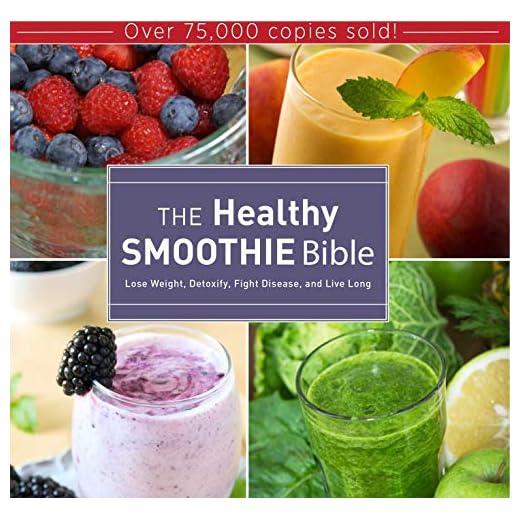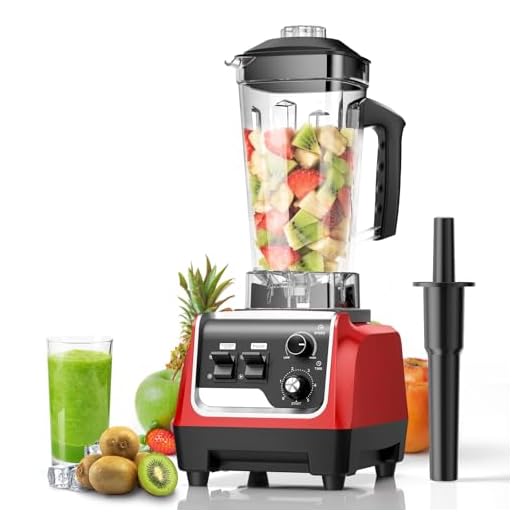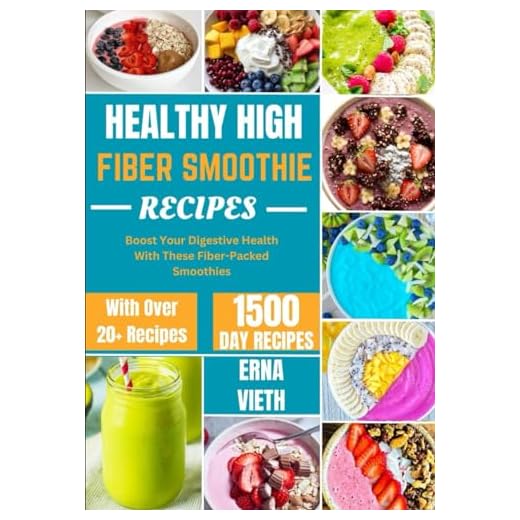
Understanding Blender Benefits
Smoothies are popular. They taste good, and they can be healthy. But are they as good for you as people say? Using a blender may change how nutritious your smoothies are.
Blending breaks down fruits and vegetables. This process can make their nutrients easier for your body to absorb. But it also raises questions. Do some vitamins get lost? Does fiber get watered down? You may wonder how to maximize your smoothie health benefits.
In this article, you will discover the power of blending. You will learn about nutrient preservation and how fiber plays a role. We will explore add-ins for extra nutrition and the impact of portion control. Plus, you’ll get some delicious smoothie recipes to try. Get ready to blend your way to better health!
Fruit Smoothies: Health Boost or Sugar Trap? Insights from Glucose Goddess Jessie Inchauspé
The Power of Blending
Blending has a way of transforming your food. It breaks down fruits and vegetables into smaller parts. This process helps your body access the nutrients locked inside.
How Blenders Work
A blender uses sharp blades that spin rapidly. When you turn it on, it creates a whirlpool effect. This movement pulls food towards the blades and chops it up. The finer the blend, the more nutrients you can absorb. Studies show that the body can better utilize vitamins like A, C, and E when fruits and veggies are blended, making your smoothie more than just a drink—it’s a nutrient powerhouse.
The Benefits of Easy Digestion
For many, chewing fruits and vegetables can be tough. Blending makes it easier. You’ve probably seen some people struggle to finish their raw greens. Blending them into a smoothie makes it simple.
You can blend even the toughest ingredients. Many blenders, like the MAGETANG 1800W Smoothie Blender, offer the power you need to smoothly blend fibrous vegetables such as kale or spinach without leaving chunks behind.
Remember, blending doesn’t just mix; it activates. The process releases beneficial compounds and antioxidants. The result? A delicious, potent smoothie that fuels your day.
As you seek to maximize the health benefits of your smoothies, you’ll also want to consider how blending affects nutrients. In the next section, we will dive into nutrient preservation and loss.
Nutrient Preservation vs. Loss
Blending does more than just mix ingredients. It influences the nutrient content of your smoothie. Some argue that blending leads to nutrient loss. Others assert that it can preserve nutrients better than cooking. Let’s take a closer look.
The Debate on Nutrient Loss
When you blend, heat and air can affect sensitive nutrients. For instance, vitamin C is easily damaged by excessive exposure to heat. Yet, studies suggest that the blending process improves the bioavailability of vitamins in fruits and veggies. That means you absorb more nutrients because they are broken down.
Factors That Affect Nutrients
Not all blenders are created equal. The speed and duration of blending can impact nutrient levels.
You can control these factors to maximize nutrient retention.
Consider powerful blenders, like the Ninja Professional 1000W Blender. They offer speed without excessive heat, allowing you to preserve more nutrients while achieving a perfect blend.
Whole vs. Processed Ingredients
The type of ingredients you use also plays a role. Whole fruits and vegetables provide fibrous structures that slow digestion. When blended, the nutrients become readily available, but it’s essential to include a mix of whole ingredients and juices to balance nutrient preservation with ease of digestion.
As you navigate the intricacies of nutrients in your smoothies, remember that every ingredient counts. The next section will delve into the importance of fiber and how it enhances your smoothies’ health benefits.
Fiber Matters
Fiber is your ally in the quest for better health. It’s a superstar in smoothies, boosting digestion and supporting overall wellness. But how does blending affect this vital nutrient?
Understanding Fiber’s Role
Fiber comes in two types: soluble and insoluble. Soluble fiber helps regulate blood sugar and lowers cholesterol. Insoluble fiber aids digestion and adds bulk to your stool. Including both types in your smoothies is essential for comprehensive health benefits.
During blending, fiber takes on a new form. The texture changes, but its benefits remain intact. You might worry about losing its integrity, but a well-made smoothie can still deliver the fiber punch you need.
Benefits of Fiber in Smoothies
Incorporating fibrous ingredients can transform your smoothies. Think leafy greens, chia seeds, or oats. These not only enhance nutrition but also create a satisfying texture.
Experiment with different sources of fiber and discover what works for you. Combining fruits like bananas and berries with spinach or flaxseed can create a well-rounded drink.
Tips for Maximizing Fiber Intake
As you explore the world of blending, remember that fiber is key. It enhances your smoothies and offers various health benefits. Next, we will look at how to boost your smoothies further with smart add-ins for extra nutrition.
Add-Ins for Extra Nutrition
Boosting your smoothies can be as simple as adding a few key ingredients. These add-ins pack a powerful punch, enhancing the health benefits of your drink. Let’s take a closer look at how you can elevate your smoothie game.
Protein Boosters
Adding protein to your smoothie can help with muscle repair and keep you feeling fuller longer. Consider these options:
Seeds for Super Nutrition
Seeds are tiny but mighty. Adding them to your smoothie can elevate its nutritional value significantly.
Leafy Greens
Don’t underestimate the power of greens. They can take your smoothies to a new level.
Flavor Enhancers
Adding flavor enhances your smoothie experience without adding extra sugar.
Putting It All Together
Experimentation is part of the fun. Mix and match these add-ins to find your perfect smoothie blend. Each combination can bring new flavors and health benefits. In the next section, we will discuss the importance of portion control and how to balance your smoothie ingredients for optimal health.
Portion Control and Energy Balance
Smoothies are more than blended fruits and veggies. They can also be key players in your strategy for portion control. When you pour a smoothie into a glass, you’re creating a visual reminder of your intake. This can help regulate how much you consume in one sitting.
Meal Replacement or Snack?
Smoothies can serve as meal replacements or snacks, depending on the ingredients and portion sizes. If you’re blending a mix of fruits, vegetables, and protein, you may find it satisfying enough to replace a full meal. On the other hand, a lighter blend is perfect for a mid-morning or afternoon snack.
Managing Caloric Intake
Smoothies can help you track your caloric intake. By blending specific ingredients, you can control how many calories you consume at once. This can help prevent overeating throughout the day.
This is where products like the Premier Protein Chocolate Shake come in handy. They offer a convenient, calorie-conscious option that can easily fit into a smoothie as a protein boost or stand alone as a quick meal.
Staying Mindful
Being mindful of portions is vital in maintaining energy balance. Using measuring tools like a scale or measuring cups can help. Alternatively, many blenders come with marked containers that allow you to blend and measure simultaneously.
Finding the right balance with smoothies can be an everyday adventure. As you learn to control portions, the next step is to explore delicious smoothie recipes that can ensure you’re nourishing your body effectively. Let’s dive into those recipes!
Smoothie Recipes for Health
Creating nutritious smoothies doesn’t have to be complicated. Here are some practical recipes that maximize flavor and health benefits. Feel free to adjust the ingredients based on your taste.
Green Protein Smoothie
A green protein smoothie boosts your energy while providing essential nutrients.
- 1 cup spinach
- 1 ripe banana
- 1 tablespoon almond butter
- 1 scoop protein powder
- 1 cup unsweetened almond milk
Berry Blast Smoothie
This smoothie is a berry lover’s dream. It’s sweet, tart, and full of antioxidants.
- 1 cup mixed frozen berries (strawberries, blueberries, raspberries)
- 1/2 cup Greek yogurt
- 1 tablespoon chia seeds
- 1 cup spinach
- 1 cup water or coconut water
Tropical Delight Smoothie
Escape to the tropics with this refreshing blend.
- 1 cup frozen mango
- 1/2 banana
- 1 tablespoon flaxseed meal
- 1 cup coconut milk
- A splash of lime juice
Chocolate Avocado Smoothie
Indulge your chocolate cravings with this nutritious twist.
- 1/2 ripe avocado
- 1 scoop cocoa powder
- 1 tablespoon honey or maple syrup
- 1 cup almond milk
- Ice cubes (optional)
Easy Smoothie Tips
Smoothies are versatile and an enjoyable way to meet your nutritional needs. With these recipes in hand, you’re ready to whip up a glass of health anytime.
As you explore the world of delicious blends, consider how these drinks fit into your broader health journey. Next, let’s wrap up our discussion with some final thoughts on smoothie health.
Final Thoughts on Smoothie Health
In summary, blending can elevate your smoothies. It helps retain nutrients, making them more accessible. You can add fiber for fullness and personalize your drink with nutritious extras. But beware of too many sugary add-ins. Balance is key.
As you make your choices, think carefully about your ingredients. Your health depends on them. So grab your blender. Create delicious, wholesome smoothies that support your well-being. Choose wisely and enjoy the benefits.













I just got the Ninja Professional 1000W Blender and I’m obsessed! 😍 I made a berry smoothie this morning and it was super creamy! The article really opened my eyes to how blending can keep nutrients intact. Who knew? Can’t wait to try more recipes! Anyone have favorites?
So glad you’re enjoying your new blender, Sarah! The Ninja is a powerhouse. Check out the Healthy Smoothie Bible for some great ideas!
I love the berry smoothie too! Have you tried adding spinach? It’s a game changer! 🌱
I’m not convinced about the nutrient loss stuff. Isn’t it all about what you put in the blender? 🤔 I mean, if you’re blending junk, it’s still junk right?
That’s a fair point, John! But the article mentions how blending can actually help with nutrient absorption. So, it depends on the quality of ingredients too!
Exactly, John! It really comes down to the ingredients you choose. The right ones can make a huge difference!
This article was super informative! I had no idea how much protein powder can change a smoothie. Got my eye on the Optimum Nutrition Whey Protein Powder. Anyone tried it?
Yes, Rachel! It’s very popular among smoothie lovers. It mixes well!
I’ve used it before, and it’s great! Just make sure to mix it with something tasty. 😄
I’ve been making smoothies for years, but I never thought about fiber! 🤯 I always thought it was about the fruit and protein. I’m definitely adding some oats to my next smoothie!
Oats are awesome! They add a nice creaminess too!
Great idea, Lisa! Oats are a fantastic fiber boost.